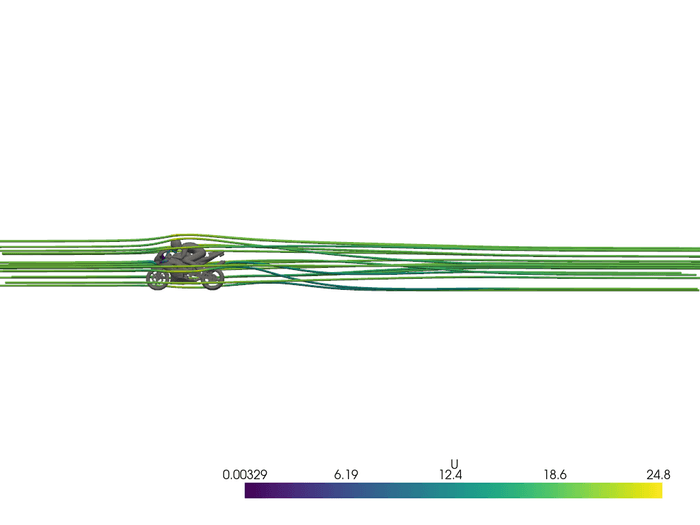Ready to dive in?
Start for free and launch your first project in minutes.
We successfully generated an OpenFOAM dataset in parallel by sampling the wind speed. This demonstrates the power of using cloud resources to efficiently scale up computational experiments. Now it's time to retrieve all the results and analyze the data to extract meaningful insights from our simulations.

Using the Inductiva package, it is easy to get a project summary and download all the output files. The following code snippet demonstrates how to do this:
import inductiva
openfoam_project = inductiva.projects.Project(
name="openfoam_dataset")
print(openfoam_project)
openfoam_project.download_outputs()
Executing print(openfoam_project) gives a summary of the main project details:
Project 'openfoam_dataset' created at 2025-06-03 11:02.
Total number of tasks: 25
Tasks by status:
success: 25
Estimated total computation cost: 0.20 US$
Running openfoam_project.download_outputs() creates a folder called inductiva_output/openfoam_project with one folder for each simulation.
Retrieving the previously set metadata is easy with the Inductiva API. Below we show how you can retrieve the metadata of all the tasks in the project:
import inductiva
openfoam_project = inductiva.projects.Project(
name="openfoam_dataset")
for task in openfoam_project.get_tasks():
print(f"Task ID: {task.id}")
print(f"Task metadata: {task.get_metadata()}")
print()
Task ID: 3b9n21xqqt97nbec07yzr6wzr
Task metadata: {'wind_speed': '46', 'local_template_dir': 'variations/wind_speed_46'}
Task ID: d5r521g6igus8wh9c3yy8fbry
Task metadata: {'wind_speed': '15', 'local_template_dir': 'variations/wind_speed_15'}
Task ID: iqf11voamuizebwt1edukkfw9
Task metadata: {'wind_speed': '7', 'local_template_dir': 'variations/wind_speed_7'}
..
In summary, using cloud computing for generating datasets of large-scale simulations not only increases efficiency, but also significantly reduces computational time and cost.
Inductiva makes it possible and convenient to run hundreds or thousands of simulations. For example, you could now extend the code to:
Inductiva can simplify research by making high-performance computing more accessible and cost-effective.